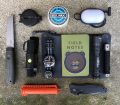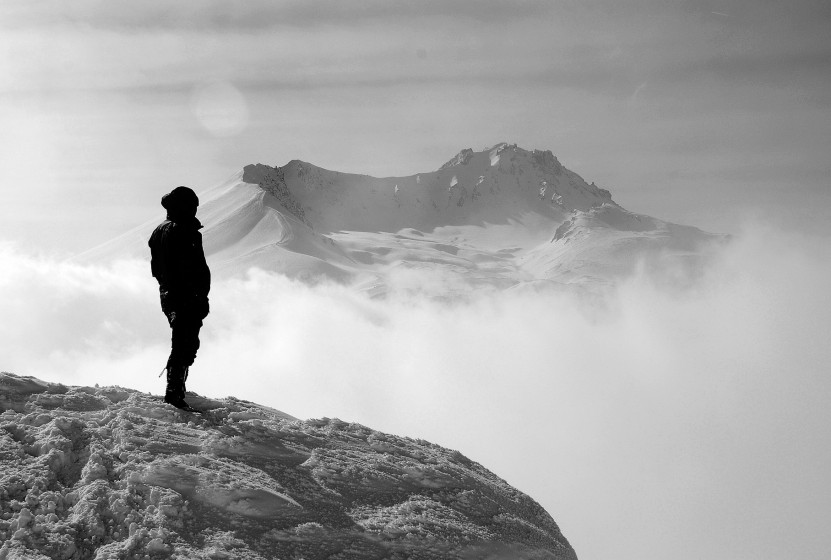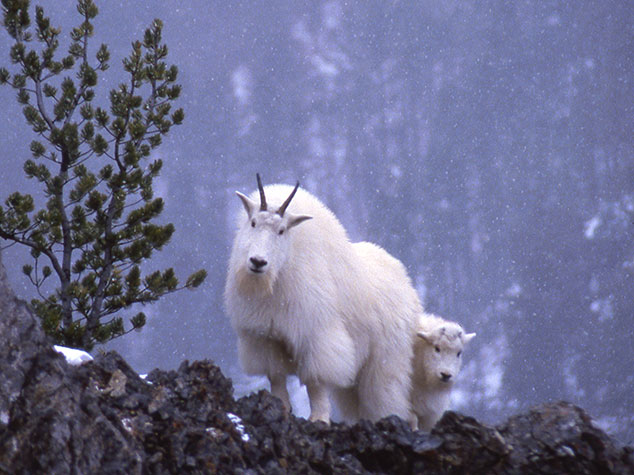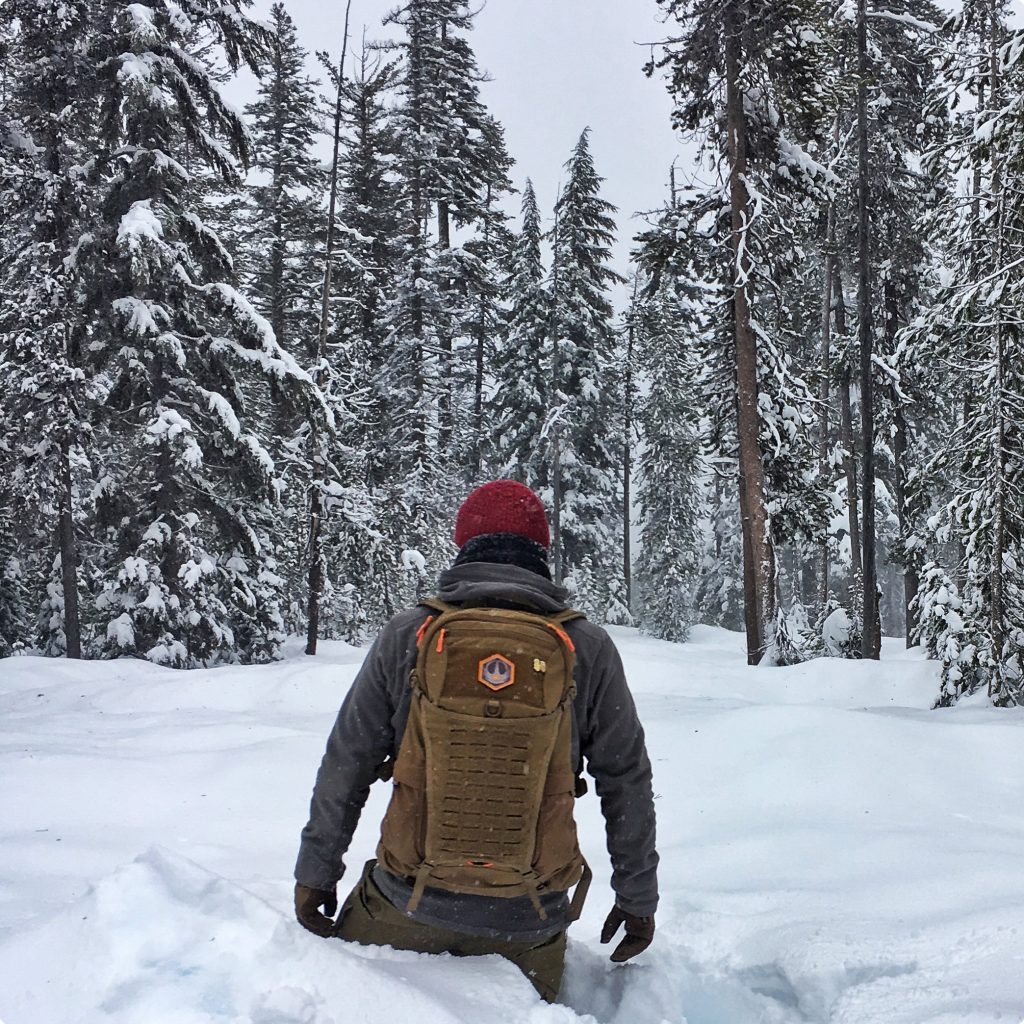As winter sets in some of us take a break from our adventuring. We retire to hearth and home. Sit by the fire, make repairs to our adventure gear and plan for the spring and summer ahead-Some of us, the rest of us get out after it.
Remember, your clothing isn’t just a fashion statement; it is a shelter that moves with and on you.
Adventuring in cold weather can be a great change of pace, a noteworthy challenge, or simply an opportunity to ditch the cabin fever but, like with any other environmental concern, it has to be done right. The most important thing to remember about adventuring in cold weather is dressing appropriately. Remember, your clothing isn’t just a fashion statement; it is a shelter that moves with and on you.
The human body operates most efficiently at a temperature range of between 65-75 degrees Fahrenheit. What we are attempting to do with how we dress, in the heat but especially in the cold, is to create a microclimate. Picture a bubble of air around your body that is right at room temperature, no matter what the weather conditions are outside. This makes those cold weather outings seem, eh, not so extreme.
To properly dress for cold weather activities remember a few simple things:
Number 1- COTTON KILLS
Don’t take that the wrong way, I love my cotton stuff too. I rock my jeans and I rock my Mountain Khakis, and my sweatshirts and my flannels. But not out on a cold weather adventure. Why not? Because cotton absorbs water, that’s why your towels are made of it. Why is that a bad thing? Well, if your cold weather clothes are made of cotton, and they get soaked with sweat, then your body will stay wet which makes keeping warm that much more difficult. This may be a minor annoyance during the working phase of your adventure. But when you stop, whether it is to make some food or put up a tent, your body stops generating heat, which means that the cold from outside will penetrate your clothing, which means that that moisture is right next to your skin, which means that you will go from hot and wet, to cold and wet a lot faster than you think. The body uses moisture to help cool it, which is not what you want when it is cold outside.
Number 2- DRESS IN LOOSE LAYERS
“Why” you ask? “I just got a bad ass new thick down parka.” That’s great, IF you’re on Everest, you can rock that thing. But here’s the deal, what keeps us warm is not, actually, our clothing- It is our bodies. Your body heat warms the air trapped in between layers, which in turn, insulates you from the cold outside. If you pile on a single, thick, layer you will be comfortable at say -20 and 80 but nothing in between. If you dress in multiple lighter layers you can keep yourself warm and cool from 80 to -20 and everything in between as you add or remove layers based on the outside temperature and your level of exertion.
Number 3-LAYER YOURSELF APPROPRIATELY
There are three layers that you need to consider:
Wicking layer-This lies next to your skin. Its primary purpose is to transport your sweat away from your body. Yes, it may do some insulating, but it is primarily there to get sweat away from you.
Insulating layer-Your wicking layer may be thick or thin or may consist of more than one insulating piece depending on the outside temperature and your level of exertion. The insulating layer’s job is to create those air pockets for your body to warm AND to continue to move your perspiration away from your body. An insulating layer that doesn’t do that is no good. Remember our conversation about cotton?
Wind/weather layer- This outer layer’s primary job is to turn away the wind, rain and the snow. There are a number of ways to do this, hard or soft-shell, rain shell, etc. Most advanced shells are made with Gore-Tex or some other semi permeable membrane. What THIS means is that the material itself, and I mean the Gore-Tex or whatever other membrane that company is using, is actually porous. The holes are small enough to allow your perspiration to escape but too small for water to get in. This, working in combination with the tendency of heat to radiate from a hot area to a less hot area allows your perspiration to evaporate off of the shell without letting the outside water in. Also a good shell will have numerous ways to allow additional heat to escape. This allows you to keep that inner temperature, the one in your microclimate, between 65-75 degrees, which as we mentioned before, is optimum for human performance.
Number 4- STAY DRY
The human body has a very hard time keeping itself warm when it is wet. By this I mean both keep outside moisture from getting in and make sure you temperature regulate to prevent excess sweating.
Number 5- EAT
Your body burns up to 30% more calories in cold weather, especially at high altitude, than it does in warm weather. You need to keep your body properly fueled in order to perform.
Number 6- DRINK
You are also losing more moisture than you think. Again, especially at high altitude. You need to hydrate.
Number 7- KEEP YOUR FEET DRY
Your feet are locked in, generally, non-breathable boots. All the perspiration that your feet are producing is going… nowhere. What happens is that in the early stages, this moisture makes your feet cold, which makes you cold. In later stages, after prolonged periods of being wet, our feet begin to re-absorb the sweat. Your skin swells and gets soft and you begin to damage your feet. I have seen people remove their boots and socks… only to have the bottom of their foot come off with the sock.
With today’s advancements in outdoor clothing and their proper use, adventuring in cold weather can be just as exhilarating as adventuring in the warm weather of summer and, if you follow these rules, you’ll be a big step closer to making that adventure as safe as possible.
Leave us comments in the section below and let the DRB community know your personal tricks for enjoying your favorite cold weather activities, and share this article with your friends and family, so they too can adventure year round wisely and wildly.






I’ve worked 30 + day shifts straight in northern Manitoba Canada the warmest it got was -31 degrees Celsius and have seen -51 ambient temp. Not to mention the wind chills. Burton snowboards base layer , one pcs heavy weight wool stanfields over that. A pant and top heavy weight wool over those and at times another heavy wool sweater over those. Carhartt double front dungarees. Non insulated Flannel button down plaid shirt. Thin shell jacket if the wind was bad but rarely had to wear shell. Wool kiking socks (thin). And jb fields -50 heavy wool socks over those. Wool glove liners and a good neck warmer. Sheep shearling hard hat liner. I can still move and be mobile with ease. Have to keep moving in those conditions. Stand around for a few minutes and faces will get long and grumpy in a hurry. I cheated the boots tho. Irish setter 1000 gram goretex No safety toe. Wool. More wool and some more wool and I made it 5 winters straight up there. Separates the boys from the men Or just learn to dress